- Clone
- DTA-1 (See other available formats)
- Regulatory Status
- RUO
- Other Names
- Glucocorticoid-induced TNFR -related gene, TNFRSF18
- Isotype
- Rat IgG2b, κ
- Ave. Rating
- Submit a Review
- Product Citations
- publications
GITR (glucocorticoid-induced TNFR-related gene) is a member of the TNF receptor superfamily, also known as TNFRSF18 and AITR (in humans). It is expressed at low levels on resting T lymphocytes and at high levels on CD25+ CD4+ Tregs. The expression of GITR on T cells can be upregulated upon activation. Interaction of GITR with its ligand (GITRL) has been demonstrated to augment T cell activation, proliferation, cytokine production as well as MAPKs and NF-κB activation, and abrogate the inhibitory function of CD25+ CD4+ Tregs. In vivo activation of GITR causes development of autoimmune diseases and restores the suppressed immune response.
Product DetailsProduct Details
- Verified Reactivity
- Mouse
- Antibody Type
- Monoclonal
- Host Species
- Rat
- Immunogen
- Mouse CD25+ CD4+ T cells
- Formulation
- 0.2 µm filtered in phosphate-buffered solution, pH 7.2, containing no preservative.
- Endotoxin Level
- Less than 0.01 EU/µg of the protein (< 0.001 ng/µg of the protein) as determined by the LAL test.
- Preparation
- The Ultra-LEAF™ (Low Endotoxin, Azide-Free) antibody was purified by affinity chromatography.
- Concentration
- The antibody is bottled at the concentration indicated on the vial, typically between 2 mg/mL and 3 mg/mL. Older lots may have also been bottled at 1 mg/mL. To obtain lot-specific concentration and expiration, please enter the lot number in our Certificate of Analysis online tool.
- Storage & Handling
- The antibody solution should be stored undiluted between 2°C and 8°C. This Ultra-LEAF™ solution contains no preservative; handle under aseptic conditions.
- Application
-
FC - Quality tested
IP, FA - Reported in the literature, not verified in house - Recommended Usage
-
Each lot of this antibody is quality control tested by immunofluorescent staining with flow cytometric analysis. For flow cytometric staining, the suggested use of this reagent is ≤ 1.0 µg per million cells in 100 µl volume. It is recommended that the reagent be titrated for optimal performance for each application.
- Application References
-
- De Luca A, et al. 2007. J. Immunol. 179:5999. PubMed
- RRID
-
AB_2814010 (BioLegend Cat. No. 126326)
AB_2814008 (BioLegend Cat. No. 126324)
AB_2814009 (BioLegend Cat. No. 126325)
AB_2814005 (BioLegend Cat. No. 126321)
AB_2814006 (BioLegend Cat. No. 126322)
AB_2814007 (BioLegend Cat. No. 126323)
Antigen Details
- Structure
- 66-70 kD homodimer of TNFR superfamily member.
- Distribution
-
Low levels on resting T cells, B cells, and macrophages; high levels on CD25+ CD4+ Tregs and CD25+ CD4+ CD8- thymocytes.
- Function
- Stimulation of GITR can abrogate or reduce the inhibitory function of CD25+ CD4+ Treg cells. In vivo activation of GITR may lead to the development of autoimmune diseases.
- Ligand/Receptor
- GITR ligand (GITRL).
- Cell Type
- B cells, Macrophages, T cells, Thymocytes, Tregs
- Biology Area
- Costimulatory Molecules, Immunology
- Molecular Family
- Adhesion Molecules, CD Molecules
- Antigen References
-
1. Tone M, et al. 2003. Proc. Natl. Acad. Sci. USA 100:15059.
2. Shimizu J, et al. 2002 Nat. Immunol. 3:135.
3. Stephens GL, et al. 2004. J. Immunol. 173:5008.
4. McHugh RS, et al. 2002. Immunity 16:311. - Regulation
- Activation of T and B cells can upregulate GITR expression.
- Gene ID
- 21936 View all products for this Gene ID
- UniProt
- View information about CD357 on UniProt.org
Related FAQs
- Do you guarantee that your antibodies are totally pathogen free?
-
BioLegend does not test for pathogens in-house aside from the GoInVivo™ product line. However, upon request, this can be tested on a custom basis with an outside, independent laboratory.
- Does BioLegend test each Ultra-LEAF™ antibody by functional assay?
-
No, BioLegend does not test Ultra-LEAF™ antibodies by functional assays unless otherwise indicated. Due to the possible complexities and variations of uses of biofunctional antibodies in different assays and because of the large product portfolio, BioLegend does not currently perform functional assays as a routine QC for the antibodies. However, we do provide references in which the antibodies were used for functional assays and we do perform QC to verify the specificity and quality of the antibody based on our strict specification criteria.
- Does BioLegend test each Ultra-LEAF™ antibody for potential pathogens?
-
No, BioLegend does not test for pathogens in-house unless otherwise indicated. However, we can recommend an outside vendor to perform this testing as needed.
- Have you tested this Ultra-LEAF™ antibody for in vivo or in vitro applications?
-
We don't test our antibodies for in vivo or in vitro applications unless otherwise indicated. Depending on the product, the TDS may describe literature supporting usage of a particular product for bioassay. It may be best to further consult the literature to find clone specific information.
Other Formats
View All CD357 Reagents Request Custom Conjugation| Description | Clone | Applications |
|---|---|---|
| Biotin anti-mouse CD357 (GITR) | DTA-1 | FC |
| FITC anti-mouse GITR | DTA-1 | FC |
| PE anti-mouse CD357 (GITR) | DTA-1 | FC |
| APC anti-mouse CD357 (GITR) | DTA-1 | FC |
| PerCP/Cyanine5.5 anti-mouse CD357 (GITR) | DTA-1 | FC |
| PE/Cyanine7 anti-mouse CD357 (GITR) | DTA-1 | FC |
| TotalSeq™-A0193 anti-mouse CD357 (GITR) | DTA-1 | PG |
| Ultra-LEAF™ Purified anti-mouse CD357 (GITR) | DTA-1 | FC,IP,FA |
| TotalSeq™-C0193 anti-mouse CD357 (GITR) | DTA-1 | PG |
| TotalSeq™-B0193 anti-mouse CD357 (GITR) | DTA-1 | PG |
| Brilliant Violet 421™ anti-mouse CD357 (GITR) | DTA-1 | FC |
| Brilliant Violet 711™ anti-mouse CD357 (GITR) | DTA-1 | FC |
Customers Also Purchased
Compare Data Across All Formats
This data display is provided for general comparisons between formats.
Your actual data may vary due to variations in samples, target cells, instruments and their settings, staining conditions, and other factors.
If you need assistance with selecting the best format contact our expert technical support team.
-
Biotin anti-mouse CD357 (GITR)
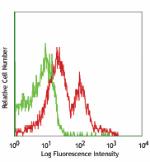
C57BL/6 mouse splenocytes stained with biotinylated DTA-1, f... -
FITC anti-mouse GITR
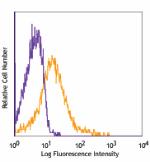
C57BL/6 splenocytes were stained with DTA-1 FITC. -
PE anti-mouse CD357 (GITR)

BALB/c mouse splenocytes stained with DTA-1 PE -
APC anti-mouse CD357 (GITR)
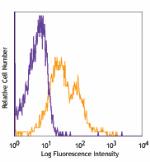
C57BL/6 splenocytes stained with DTA-1 APC -
PerCP/Cyanine5.5 anti-mouse CD357 (GITR)
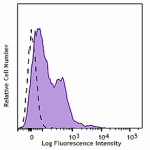
C57BL/6 mouse splenocytes were stained with CD357 (Clone DTA... -
PE/Cyanine7 anti-mouse CD357 (GITR)
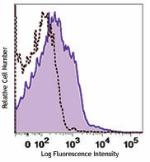
C57BL/6 mouse splenocytes were stained with CD357 (clone DTA... -
TotalSeq™-A0193 anti-mouse CD357 (GITR)
-
Ultra-LEAF™ Purified anti-mouse CD357 (GITR)
-
TotalSeq™-C0193 anti-mouse CD357 (GITR)
-
TotalSeq™-B0193 anti-mouse CD357 (GITR)
-
Brilliant Violet 421™ anti-mouse CD357 (GITR)

C57 mouse splenocytes were stained with anti-mouse CD25 APC ... -
Brilliant Violet 711™ anti-mouse CD357 (GITR)

C57BL/6 mouse splenocytes were stained with anti-mouse CD25 ...
 Login / Register
Login / Register 







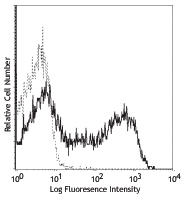





Follow Us